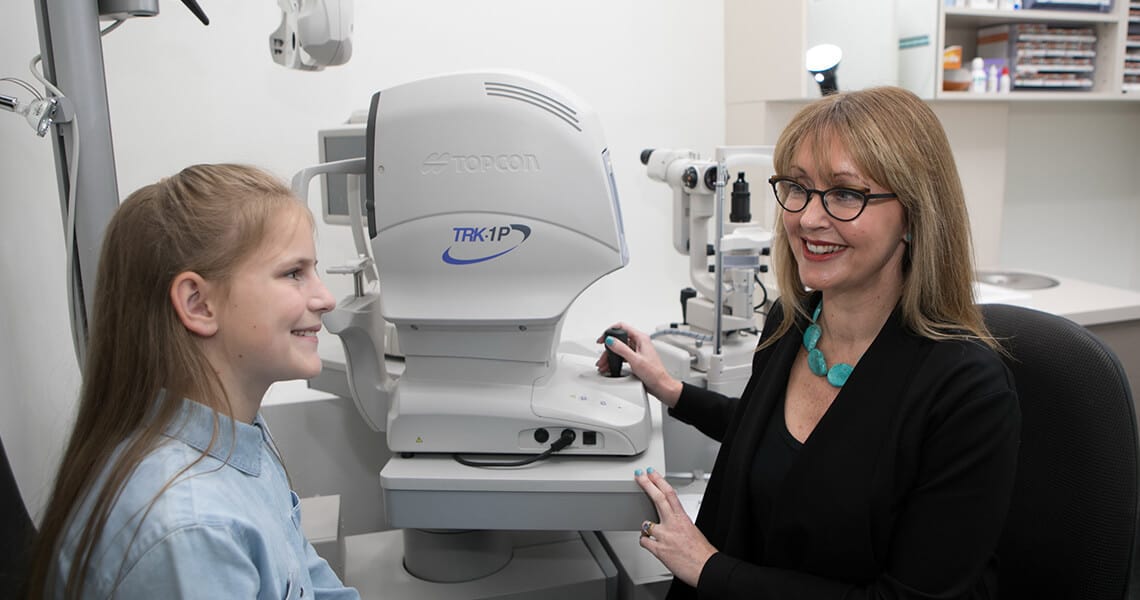Children learn more from vision than all other senses combined
80% of a child’s learning in school is through their vision. Good eyesight and eye coordination are important to help children reach developmental and educational milestones. That’s why regular eye examinations should commence before young ones start primary school.
If you have concerns about your child’s vision, it’s never too early to get their eyes examined. If you have noticed your child squinting either when reading or looking at long distances, it is worth having their vision checked as soon as possible. Poor vision can also be the cause of learning difficulties in children.
At Canterbury Eyecare, we are passionate about optimising the vision and eye health of children. Our expert team will ensure your child’s eyes are professionally taken care of.
Book an appointment for your child now
We have developed a guide for kids to visiting Canterbury Eyecare. Follow this link to see it.

Common Eye Conditions in Children
Possible conditions that may occur in children are usually vision based, however, a child may not know their vision issues to be out of the ordinary. Some may be more prevalent where there is a family history of that condition.
Myopia, or shortsightedness, is an eye condition which can occur at any age, but commonly develops in school aged children and teenagers. In this age range it is common to progress rapidly meaning throughout life more reliance on glasses or contact lenses and a higher risk of eye diseases such as Glaucoma and Retinal Detachments.
Research spanning decades into speciality contact lenses, topical medications and glasses designs has enabled Optometrists to now prescribe options to slow the progression of myopia. Click here for more information about the management of myopia in children and teenagers or book an appointment to have a consultation with one of our optometrists.
Hyperopia may also be called long-sightedness or far-sightedness. In most cases it causes blurry vision or eye strain when focusing on anything nearby, however, those with significant longsightedness will find all distances blurry.
It may develop from birth or in the early years of a child’s life. Click here for more information on Hyperopia.
Astigmatism is a common eye condition which causes fine detail, at any distance, to appear smudged, ghosting or doubling. People who are long-sighted or short-sighted often also have astigmatism, or astigmatism can occur by itself.
Rarely if astigmatism is caused by an eye disease, surgery may be necessary. Click here for more information on Astigmatism.
Strabismus, more commonly known as an eye turn, may occur in the first 6 months of a child’s life, or in their early childhood years.
It is commonly caused by high levels of prescription and when detected and treated early, can be managed effectively.
Amblyopia is the term for one, or both eyes, that are “lazy” or have vision below what is expected for that child’s age. It can be in association with a turned eye, or just due to differences in the prescription between eyes. Rarely it is caused by eye disease.
With early intervention vision can be improved. Commonly the use of glasses or contact lenses and patching or eye drops are used to treat Amblyopia.
Visual Fatigue generally refers to the symptoms caused by focussing disorders. In Children they may present differently to adults.
A child may skip lines or have poor attention when reading, they may have see two of what they’re reading or be increasingly fatigued and get headaches towards the end of a school day. These can be due to extended near work, eye muscle abnormalities or not wearing prescription glasses or contact lenses when they’re needed.
Please contact us or book an appointment with one of our Optometrists if you have any questions or for more information.
